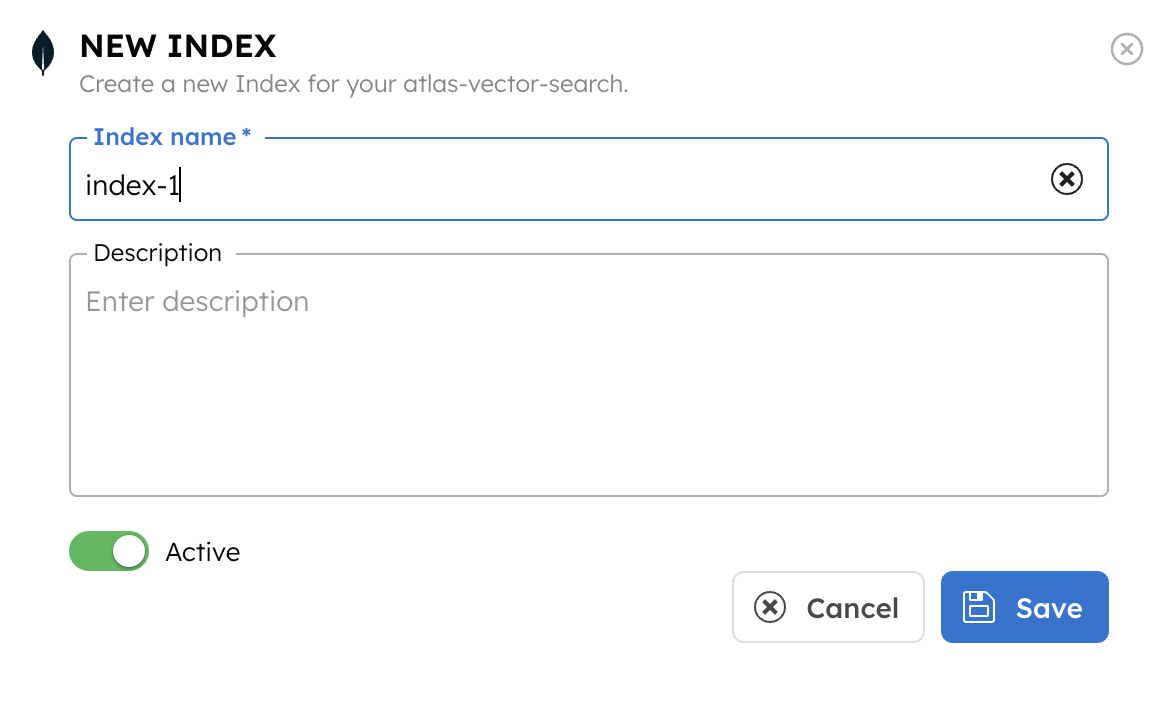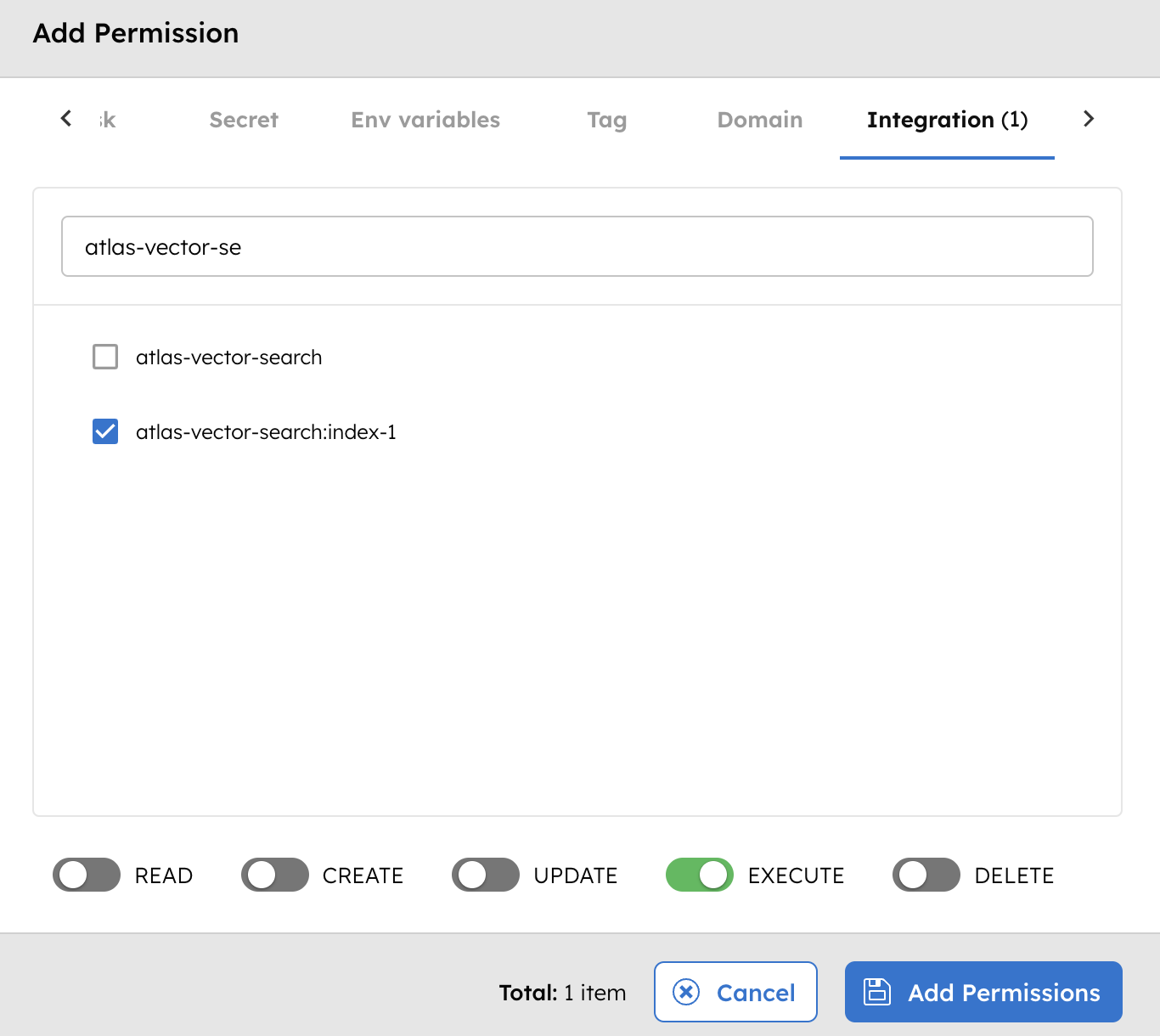Mongo Vector Database Integration with Orkes Conductor
To use LLM embedding tasks in Orkes Conductor, you must integrate your Conductor cluster with the necessary vector database providers. This guide explains how to integrate Atlas Vector Search from MongoDB with Orkes Conductor. Here’s an overview:
- Get the required credentials from Atlas Vector Search.
- Configure a new Mongo Vector Database integration in Orkes Conductor.
- Add indexes to the integration.
- Set access limits to the vector database to govern which applications or groups can use it.
Step 1: Get the Atlas Vector Search credentials
Set up Atlas Vector Search and retrieve the required credentials, including the MongoDB Atlas connection string and database name.
Step 2: Add an integration for Mongo Vector Database
After obtaining the credentials, add a Mongo Vector Database integration to your Conductor cluster.
To create a Mongo Vector Database integration:
- Go to Integrations from the left navigation menu on your Conductor cluster.
- Select + New integration.
- In the Vector Databases section, choose Mongo Vector Database.
- Select + Add and enter the following parameters:
| Parameters | Description |
|---|---|
| Integration name | A name for the integration. |
| MongoDB Atlas connection string | The MongoDB Atlas connection string, in the format: mongodb+srv://username:password@cluster0.mongodb.net/ |
| Database name | The database name to store and query vector data. |
| Embedding dimensions | The number of dimensions in the embeddings. The embedding dimensions often depend on the AI model used to generate the embeddings. |
| Distance metric | The distance metric, which is a metric to measure the similarity or distance between vectors. Supported values:
|
| Number of nearest neighbours | The number of nearest neighbors to be used during the search. |
| Description | A description of the integration. |

- (Optional) Toggle the Active button off if you don’t want to activate the integration instantly.
- Select Save.
Step 3: Add Mongo Vector Database indexes
Once you’ve integrated the Mongo Vector Database, the next step is to configure specific indexes.
To add an index to the integration:
- Go to Integrations and select the + button next to the integration created.

- Select + New Index.
- Enter the Index name and a Description.

- (Optional) Toggle the Active button off if you don’t want to activate the index instantly.
- Select Save.
This saves the index for future use in AI tasks within Orkes Conductor.
Step 4: Set access limits to integration
Once the integration is configured, set access controls to manage which applications or groups can use the databases.
To provide access to an application or group:
- Go to Access Control > Applications or Groups from the left navigation menu on your Conductor cluster.
- Create a new group/application or select an existing one.
- In the Permissions section, select + Add Permission.
- In the Integration tab, select the required vector database providers and toggle the necessary permissions.
- Select Add Permissions.

The group or application can now access the vector database according to the configured permissions. With the integration in place, you can now create workflows using AI/LLM tasks.
To store data in a vector database, an embedding is to be generated by an AI model. You must also integrate an AI model provider of your choice to use this integration in workflows.